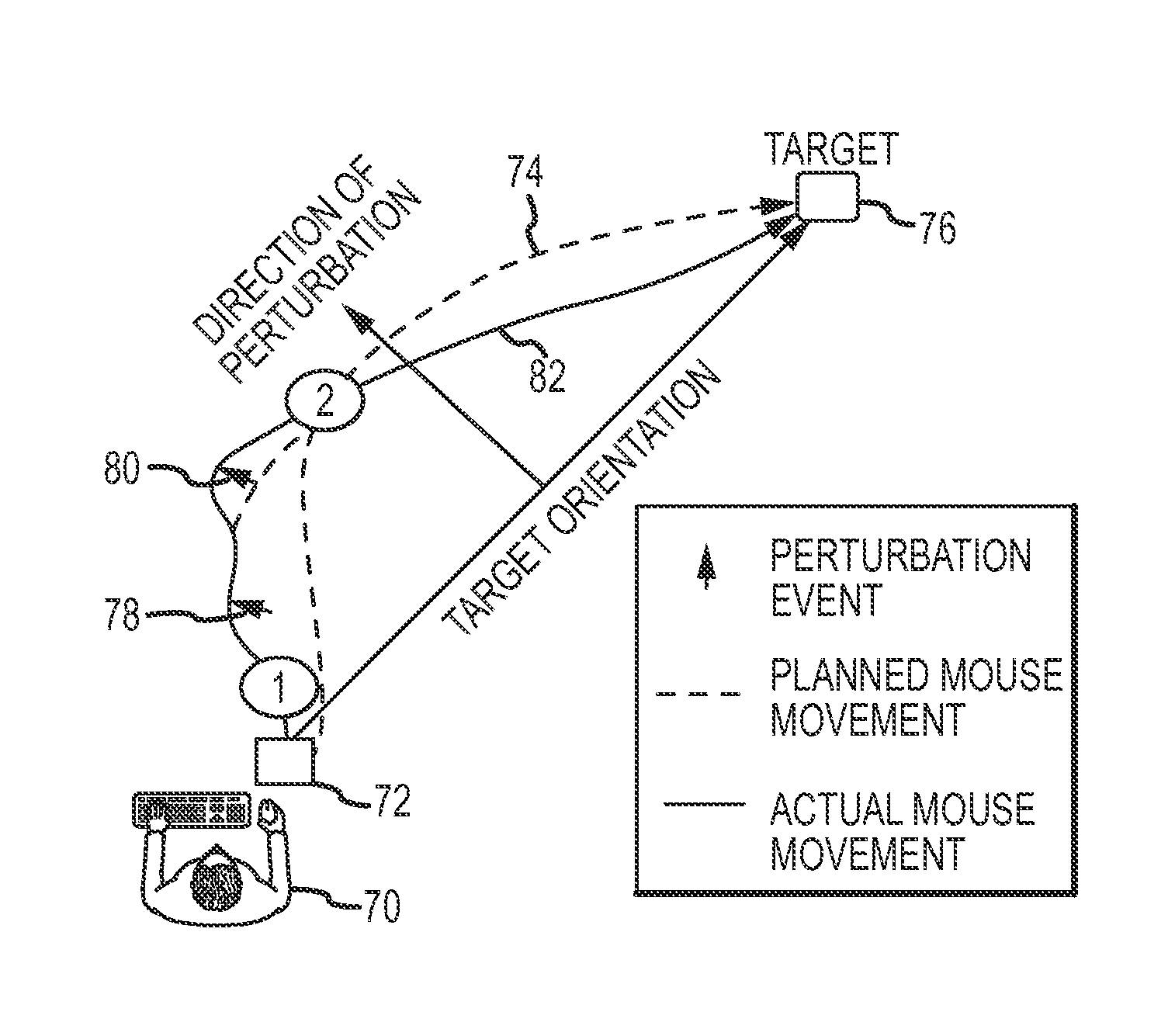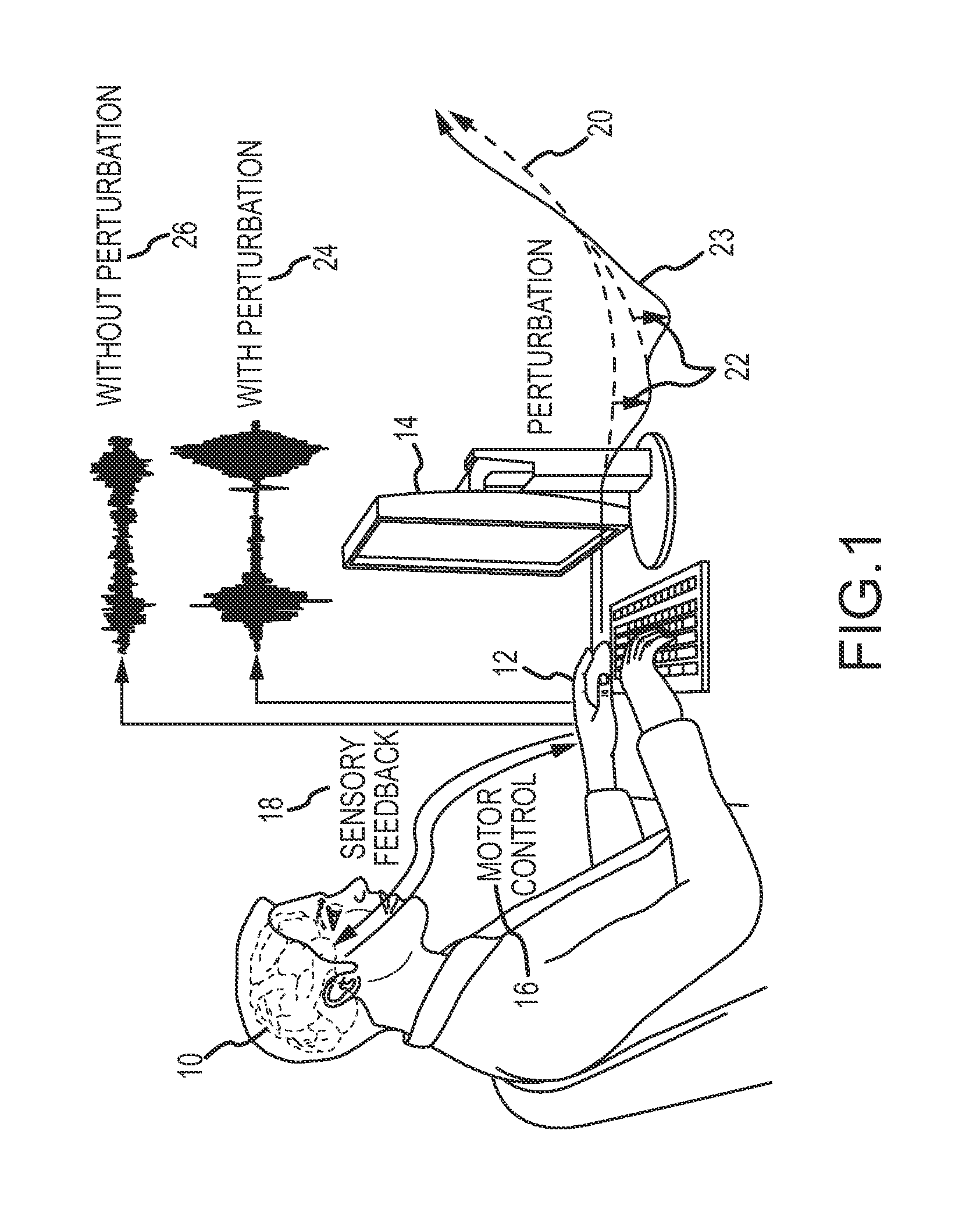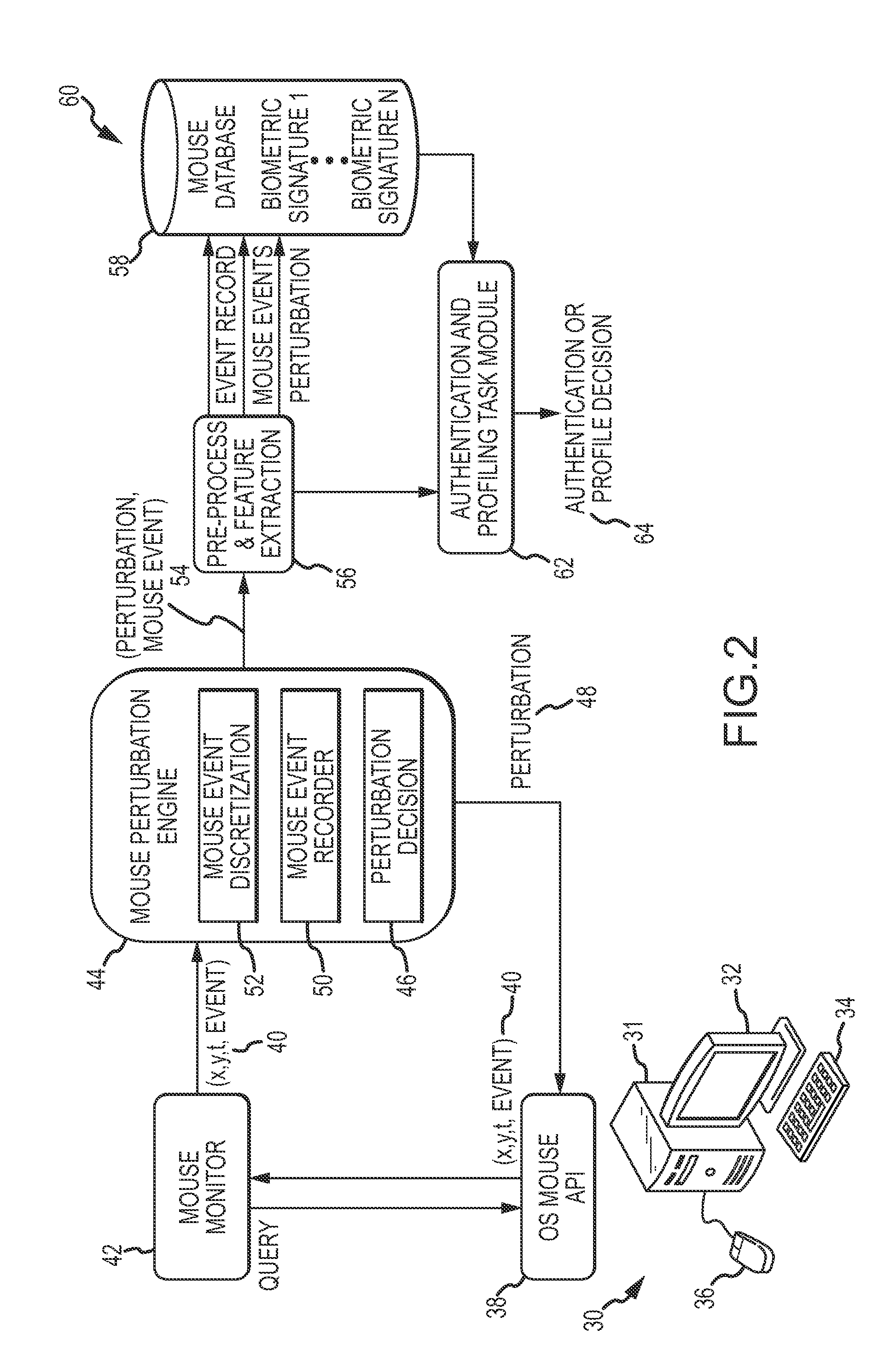Cognitive biometrics using mouse perturbation
a biometric and cognitive technology, applied in the field of cybersecurity and cognitive biometrics, can solve the problems of lack of individual specificity, large data and use requirements, and low user experience of current approaches, and achieve the effect of enriching the richness of biometric signatures
- Summary
- Abstract
- Description
- Claims
- Application Information
AI Technical Summary
Benefits of technology
Problems solved by technology
Method used
Image
Examples
Embodiment Construction
[0021]The present invention comprises augmenting the richness of biometric signatures that can be extracted from mouse dynamics by introducing perturbations in the response of the computer mouse and measuring the motor responses of the individual user. User responses to unexpected and subtle perturbations (e.g., small changes in mouse velocity, position and / or acceleration) reveal new unique sources of information in the mouse movement signal that reflect the user's cognitive strategies and are inaccessible via existing mouse biometric technologies. A user's response to these perturbations contains information about intrinsic cognitive qualities that can be used as a robust biometric for personal authentication and to support profiling of the individual (e.g., gender, cultural background, cognitive or emotional state, cognitive quality etc.). A captured biometric signature is significantly more difficult to fake due to the need to replicate both the timing and type of perturbation a...
PUM
 Login to View More
Login to View More Abstract
Description
Claims
Application Information
 Login to View More
Login to View More - R&D
- Intellectual Property
- Life Sciences
- Materials
- Tech Scout
- Unparalleled Data Quality
- Higher Quality Content
- 60% Fewer Hallucinations
Browse by: Latest US Patents, China's latest patents, Technical Efficacy Thesaurus, Application Domain, Technology Topic, Popular Technical Reports.
© 2025 PatSnap. All rights reserved.Legal|Privacy policy|Modern Slavery Act Transparency Statement|Sitemap|About US| Contact US: help@patsnap.com



